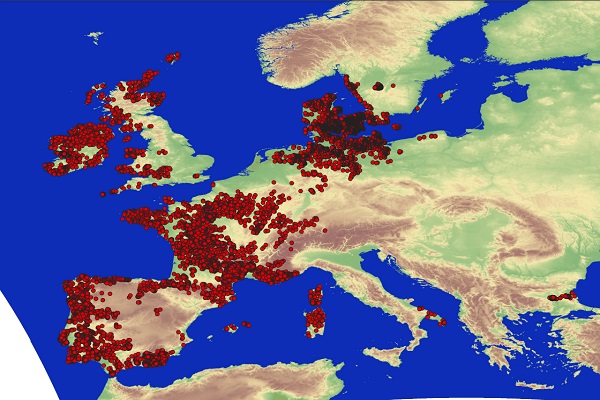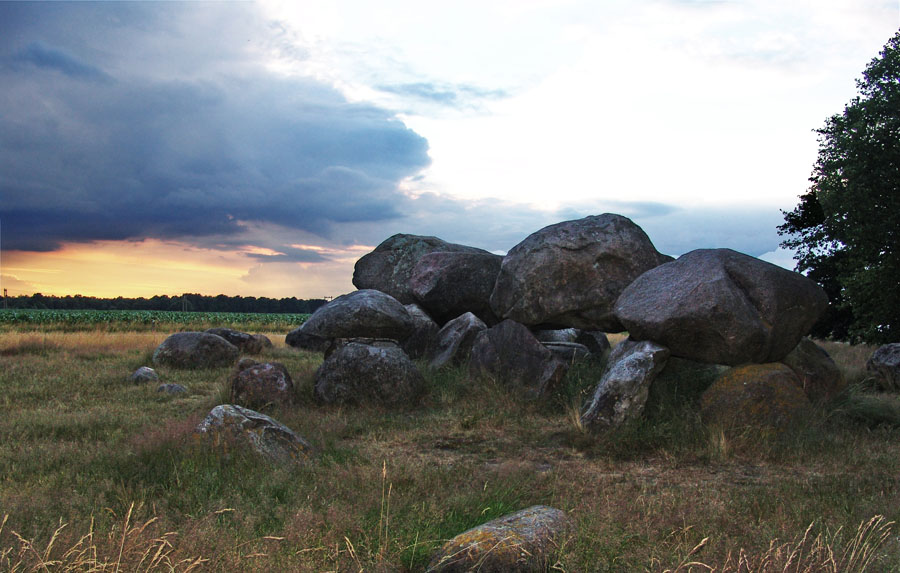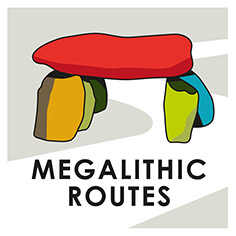Megalithic Europe
A megalith is one or many very large stone(s) that has/ been used by humans to construct a prehistoric structure or monument. Megaliths (deduced from the Old Greek μέγας (mégas) big and λίϑος (líthos) stone) are a worldwide, time-transcending phenomenon. This includes standing stones, stone circles, alignments, megalithic tombs and megalithic buildings.
Big stones – literally mega-liths – were widely used by prehistoric communities to build monuments, burial places, and sanctuaries. Many survive as enduring and fascinating features in our modern landscapes.
The earliest known megalithic structure is at Göbekli Tepe (Turkey) where decorated T-shaped pillars up to 6m tall were erected c. 9000 BC within a walled sanctuary. By 5000 BC the tradition of raising great stone pillars was also practiced in Brittany (France) where they are locally known as menhirs: one at Er Grah near Carnac stood 21m tall, weighed 280 tonnes, and was decorated with the image of an axe. Similar pillars of greater or lesser size were set up in many parts of Europe over the succeeding millennia, some shaped to resemble human forms.
Megalithic tombs, mainly built between 5000 BC and 2000 BC, represent the oldest surviving indigenous architecture of northwest Europe. Round mounds are most common in the west, long mounds in the east, reflections of contemporary houses for the living whose forms were copied to provide ‘houses for the dead’. Many regional styles can be seen, but in all areas building materials were carefully chosen and attention was paid to the colour and texture of the stones used at significant places in the chamber and around the mound. Careful excavation shows that some monuments were periodically remodelled, as at Flintbek (Germany) where six phases of change occurred over just three centuries.
Dolmens with great heavy capstones, some decorated with cup-marks, covering closed chambers are widespread around the Baltic coastlands. Along the Atlantic seaboard the portal dolmens have capstones lifted high into the air like stones that float in the sky. Larger monuments with segmented chambers are common in both areas, the deposition of burials being structured by the form of the chambers which were probably opened at intervals on auspicious occasions.
Most widespread across northwest Europe are the passage graves (Ganggrab) with one or more centrally placed chamber that was easily accessible via a narrow stone-edged passage leading though the mound. Some, for example Gavrinis (France) and Newgrange (Ireland), are richly decorated with dazzling arrays of carved motifs. In the TRB cultures of the Netherlands, north Germany, and southern Scandinavia, passage graves usually contain rich deposits of flint axes, pottery, and personal ornaments associated, where they survive, with carefully deposited collections of human remains.
As well as tombs and menhirs, the megalithic tradition also includes alignments, circles, and rectangles such as can be seen in Brittany, Ireland, Wales, England, Scotland, and parts of southern Scandinavia. These date mainly to the period 4000 BC to 2000 BC, the most internationally famous being Stonehenge in southern England.




Movies

Publications about Megaliths


